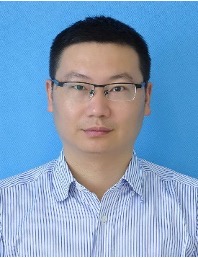Efficient Development of New High-entropy
Alloys in Nuclear Energy Field
Huang
He*,
Shi Jie, Huang Huogen, Zhang Jiajia, Li Jinfeng, Fa Tao
Institute of Materials, China Academy of
Engineering Physics
ABSTRACT: Nuclear energy represented by fusion and
fission energies is an effective way to solve the future energy crisis of
mankind. Due to its extreme operating conditions, higher performances of structural
and functional materials are required for its safe and reliable operation.
Focusing on the improvement of service performances of specific fusion/fission
materials, the phase structure prediction and strength-toughness design of new
nuclear energy high-entropy alloys are carried out based on high-throughput
theoretical calculations. In terms of phase structure prediction, a rapid and
accurate method for designing tungsten and uranium high-entropy alloys with
single or dual solid solution phase was established by collecting the phase
structure data of multi-alloys and using machine learning random forest
algorithm. The XRD results verified the correctness of theoretical
calculations; In terms of the strength-toughness design based on the stacking
fault energy of different slip systems of BCC high-entropy alloys, the
optimized principle of competition between the slipping and twinning stacking
fault energies is proposed. The results of the compression mechanical
properties of the tungsten and uranium high-entropy alloys show that the
theoretical model possessed a better guide for designing the strength-toughness
property of the high-entropy alloys with BCC structure. The rapid and accurate
design of the phase structure and performance of the high-entropy alloys with
BCC structure provides a unique way for developing the new random solid
solution high-entropy alloys.
Keywords: uranium high-entropy alloys; tungsten high-entropy alloys; random forest; strength-toughness principle.

Huang He, Senior Engineer. He gets his PhD guided by academician Meng Daqiao at China Academy of Engineering Physics with the major of the Nuclear Fuel Cycle and Materials. From 2016 to 2017, he worked as a post-doctor at the Royal Institute of Technology in Sweden, with his co-supervisor Levente Vitos. His research currently focuses on the design of fusion/fission structural and functional materials, serves as the chief of the ITER talent project of the Ministry of Science and Technology, and presides one innovation fund of the Chinese Academy of Engineering Physics. He also served as a reviewer for the international journals, such as Material Design, Alloys and Compounds, Applied Energy and published more than 20 papers on the international journals, such as Acta Materialia, Nature Communications, Journal of Physics: Condensed Matter, Journal of Nuclear materials.